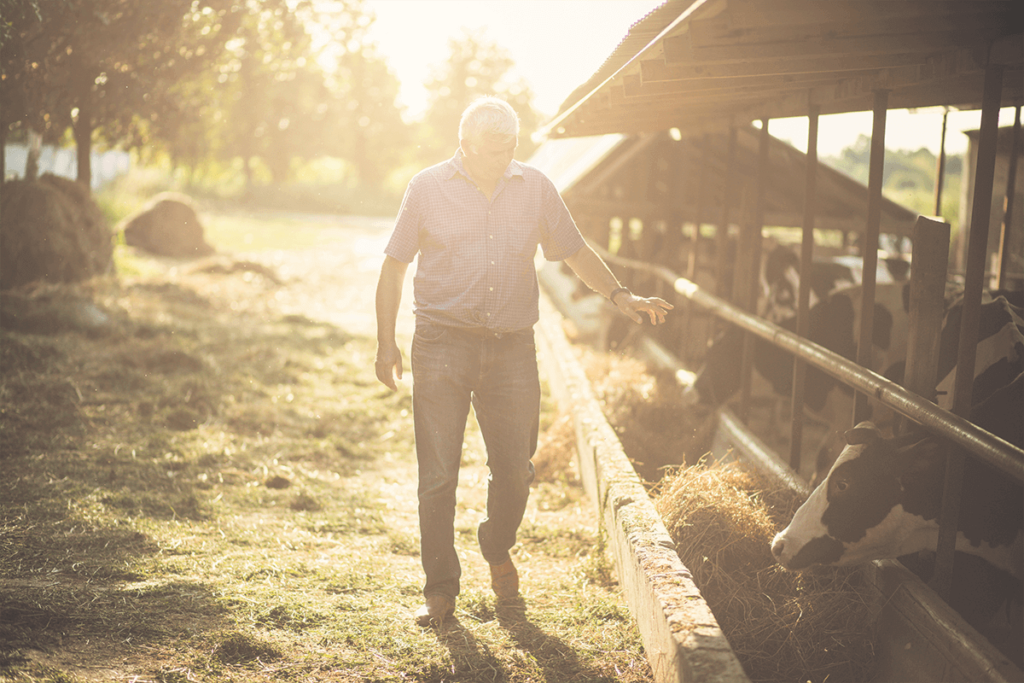Besides being a nuisance, flies can also transmit a range of diseases and may have a negative impact on animal health. For example, flies may annoy poultry so much that they become irritable and this can lead to an increase in feather pecking and aggression. The fly risk is often higher in intensive production systems where animals are kept close together and large amounts of organic waste are present.
The best way to deal with flies is with an integrated management program (IPM). IPM uses a variety of practices to target fly populations at different stages of development, such as the ground dwelling stages (larvae and pupae) and the adult fly. The aim of the program should be to keep fly numbers to below an acceptable threshold. The elements of a good IPM program include:
- Monitoring fly numbers
It is important to understand the natural cycle of the fly population in your area. When are flies increasing in number? When are they absent? When are they at their peak? Monitor fly numbers weekly or fortnightly and keep records of population counts. There are a number of ways to do this. You can put out white spot cards and count numbers of faecal spots. These cards can be dated and filed for future reference. Or you can hang sticky traps or tapes and count them regularly. Fly traps can also be used. These can catch significant numbers of flies and assist in keeping fly numbers down when good manure management practices are also in place (see below).
- Moisture control
Once fly eggs hatch, fly larvae burrow into the ground to develop into pupae, only later emerging as adults. In dry environments, fly eggs may die before hatching, or larvae can struggle to feed enough for healthy development. You can manage the success of the ground stages of flies by managing ground moisture. Regularly check for and repair broken waterers and leaking pipes. Even a small leak can provide enough moisture to create a large fly breeding zone. Provide maximum ventilation over manure beds to aid rapid drying. This might include mowing or trimming trees around animal sheds to improve air movement. Divert surface water with proper grading and drainage away from manure accumulation areas.
- Managing manure strategically
Clean out manure in low fly periods which is when the larvae and pupae tend to be accumulated in the ground. Depending on location, this may be in mid-winter when it is too cold for flies, or in mid-summer in regions where the summers are hot and dry. Leave a pad of old manure to aid in the drying of new manure. This will also provide a reservoir of the “good bugs” – natural predators and parasites that will help keep the fly population in check. Avoid eroding floors to below surrounding ground level to prevent water accumulating and keeping manure wet.
- Sanitation
Clean up spilled feed as this can be a significant source of fly breeding, especially if it becomes wet. Check for areas where manure may accumulate because it is more difficult to access, for example around posts or shed supports. Remove dead animals and waste organic materials such as broken eggs daily. These can provide protein for fly egg laying and a focus for disease spread.
- Selective insecticide use
There are so many reasons why keeping chemical use to a minimum is advantageous for the farmer – keeping costs to a minimum, keeping chemical efficacy to a maximum, premiums for chemical-free production and keeping local beneficial insect populations healthy. Use sprays only when your fly monitoring indicates fly numbers are building. Rotating insecticide groups will help reduce the development of insecticide resistance. To avoid unwanted, off-target effects, be sure to use products strictly as directed on the label and dispose of any chemical waste responsibly.
EnviroSafe fly traps are effective in trapping a range of blowfly and nuisance fly species. They will enable you to monitor your local fly population and quickly alert you to any increase in flies in your environment. The Jumbo Trap with its generous 2 litre volume, is well suited to intensive rural applications where fly numbers can be higher.
Further reading
https://bugsforbugs.com.au/wp-content/uploads/FlyIPM_ReportDAFF.pdf
https://www.australianeggs.org.au/dmsdocument/616-fly-control-in-layer-sheds-an-integrated-approch

